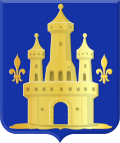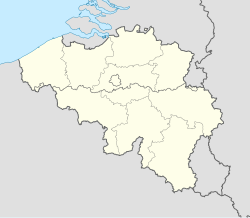Top Qs
Timeline
Chat
Perspective
Genappe
City in Walloon Brabant province, Wallonia, Belgium From Wikipedia, the free encyclopedia
Remove ads
Genappe (French pronunciation: [ʒənap] ⓘ; Dutch: Genepiën, Dutch pronunciation: [ɣeːˈneːpijə(n)] ⓘ; Walloon: Djinape) is a municipality and city[2] of Wallonia located in the Belgian province of Walloon Brabant.
Remove ads
Demographics
As of 2023, the municipality of Genappe boasted a population of 14,266 residents.[3] Spanning a total area of 89.57 km2 , the region has a population density of 15,26 inhabitants per km2.
History
This section needs expansion. You can help by adding to it. (November 2020) |
Although his birthplace was probably Boulogne-sur-Mer, one 13th-century chronicler cites Baisy (now Baisy-Thy in Genappe), as the birthplace of Godfrey of Bouillon, the best-known leader of the First Crusade (1096-1099).[4]
Postal history
The Genappe post-office opened before 1830. It used a postal code 48 with bars (before 1864), and 145 with points before 1870. BOUSVAL opened on 8 April 1880.[5]
Postal codes in 1969 (before the merger of municipalities in 1977):[6] - 1470 Genappe - 1471 Loupoigne - 1472 Vieux-Genappe - 1473 Glabais - 1474 Ways - 1475 Baisy-Thy - 1476 Houtain-le-Val - 1488 Bousval.
Remove ads
Twinned cities
- Narborough, United Kingdom
- Littlethorpe, United Kingdom
- Franklin, Louisiana, United States
See also
References
External links
Wikiwand - on
Seamless Wikipedia browsing. On steroids.
Remove ads






